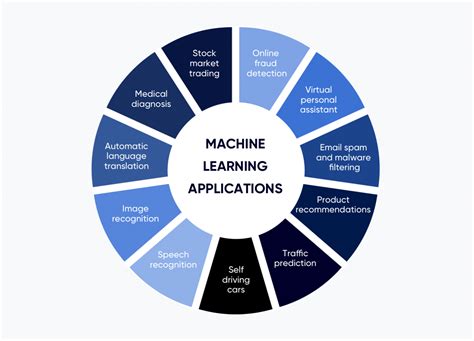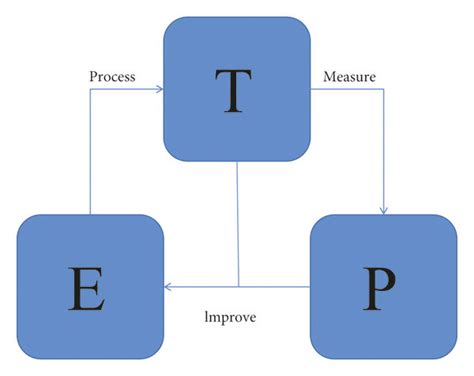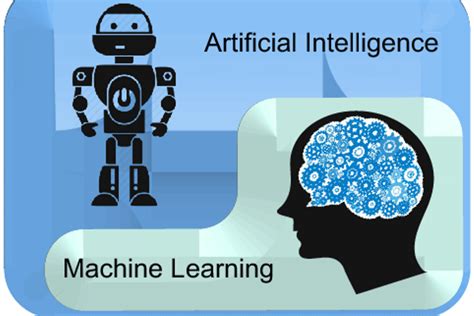Define Machine Learning

Machine Learning (ML) is a revolutionary field of computer science that has transformed the way we interact with technology and revolutionized various industries. At its core, ML is a subset of artificial intelligence (AI) that enables computer systems to learn and improve automatically through experience and data, without being explicitly programmed.
Understanding the Fundamentals

Machine Learning focuses on the development of algorithms and models that can analyze vast amounts of data, identify patterns, and make intelligent decisions or predictions. Unlike traditional programming, where explicit instructions are provided for each task, ML systems learn from data and make decisions based on the insights they derive. This learning process involves adjusting and refining the algorithms over time, allowing the system to adapt and improve its performance.
Key Components of Machine Learning
At a high level, ML systems consist of three main components: input data, algorithms, and output. The input data serves as the foundation for the learning process, providing the system with the information it needs to make predictions or decisions. Algorithms are the heart of ML, as they define the process of learning and decision-making. These algorithms are designed to extract meaningful patterns from the data and apply them to new, unseen data.
| Component | Description |
|---|---|
| Input Data | Raw information used for training and testing ML models. |
| Algorithms | Mathematical models and procedures that enable learning and decision-making. |
| Output | Predictions, classifications, or decisions made by the ML system. |

The Learning Process
Machine Learning algorithms are trained using labeled data, where the correct output or decision is already known. During training, the algorithm adjusts its internal parameters to minimize the difference between its predicted output and the actual output. This iterative process, known as optimization, allows the algorithm to learn and improve its accuracy. Once trained, the algorithm can make predictions or decisions on new, unseen data, a process known as inference.
Types of Machine Learning

Machine Learning can be broadly categorized into three main types, each with its own unique characteristics and applications:
Supervised Learning
Supervised Learning is the most common type of ML, where the algorithm learns from labeled data. The algorithm is provided with input-output pairs, and its goal is to learn a mapping function that can accurately predict the output for new, unseen inputs. Common applications of Supervised Learning include image classification, sentiment analysis, and fraud detection.
Unsupervised Learning
In Unsupervised Learning, the algorithm is presented with unlabeled data, and its task is to identify patterns or structures in the data without any prior knowledge of the correct output. This type of ML is often used for exploratory data analysis, clustering similar data points, and dimensionality reduction. Unsupervised Learning is particularly useful when dealing with large datasets and when the underlying patterns are not immediately apparent.
Reinforcement Learning
Reinforcement Learning is a type of ML where an agent learns to make a sequence of decisions in an environment to maximize a cumulative reward. The agent interacts with the environment, receives feedback in the form of rewards or penalties, and adjusts its behavior accordingly. Reinforcement Learning is widely used in robotics, game playing, and autonomous systems, where the agent learns through trial and error to achieve optimal performance.
Applications of Machine Learning
Machine Learning has found numerous applications across various industries, revolutionizing the way we live and work. Some notable applications include:
- Healthcare: ML is used for disease diagnosis, drug discovery, personalized medicine, and medical imaging analysis.
- Finance: ML algorithms are employed for fraud detection, algorithmic trading, risk assessment, and customer segmentation.
- E-commerce: Personalized product recommendations, customer segmentation, and predictive analytics are powered by ML.
- Automotive: Self-driving cars, advanced driver assistance systems, and traffic flow optimization utilize ML techniques.
- Natural Language Processing: ML enables language translation, sentiment analysis, chatbots, and voice recognition.
- Image and Speech Recognition: ML algorithms power facial recognition systems, object detection, and speech-to-text conversion.
Future Prospects and Challenges
Machine Learning continues to advance rapidly, with ongoing research and development pushing the boundaries of what is possible. Some key areas of focus include:
- Explainable AI: Developing techniques to understand and interpret the decisions made by complex ML models.
- Ethics and Bias: Addressing ethical concerns and ensuring fairness and transparency in ML algorithms.
- Federated Learning: Enabling collaborative ML without sharing sensitive data, ensuring privacy and security.
- Transfer Learning: Leveraging pre-trained models to adapt to new tasks and domains.
- Automated ML: Streamlining the ML pipeline to make it more accessible and efficient.
How does Machine Learning differ from traditional programming?
+Machine Learning differs from traditional programming in that it focuses on enabling computer systems to learn and adapt automatically. While traditional programming requires explicit instructions for each task, ML systems learn from data and make decisions based on patterns they identify. This allows ML to handle complex, data-driven tasks more efficiently and accurately.
What are some real-world applications of Machine Learning in healthcare?
+Machine Learning is revolutionizing healthcare with applications such as accurate disease diagnosis, personalized treatment plans, drug discovery, and medical imaging analysis. For example, ML algorithms can analyze MRI scans to detect brain tumors with high accuracy, assisting doctors in making timely and precise diagnoses.
How does Reinforcement Learning work in practice?
+In Reinforcement Learning, an agent learns through trial and error in an environment. The agent takes actions, receives feedback in the form of rewards or penalties, and adjusts its strategy accordingly. This iterative process enables the agent to learn optimal behaviors over time. For instance, in a robotics application, the agent might learn to navigate an obstacle course by receiving rewards for successful navigation and penalties for collisions.


